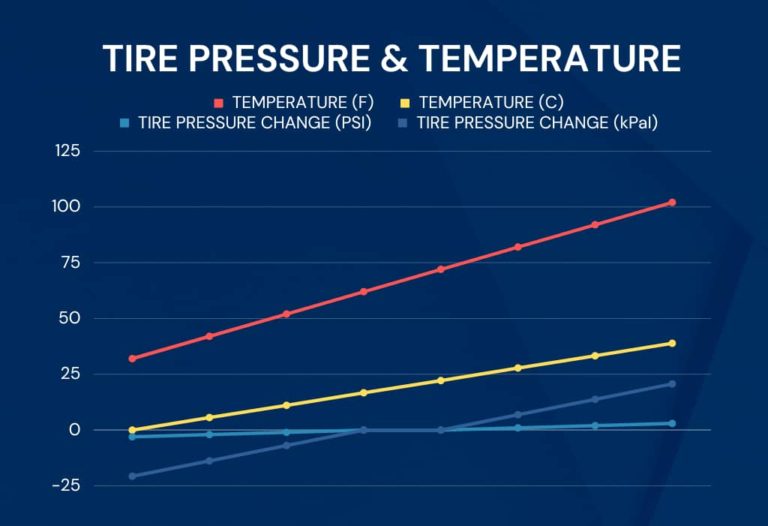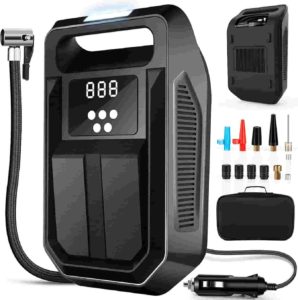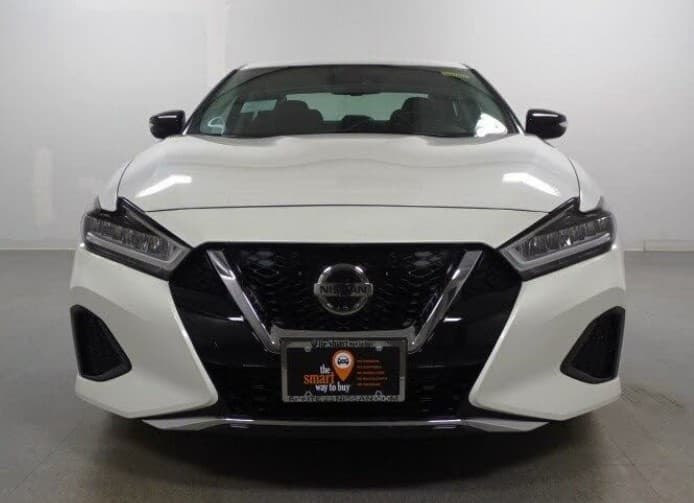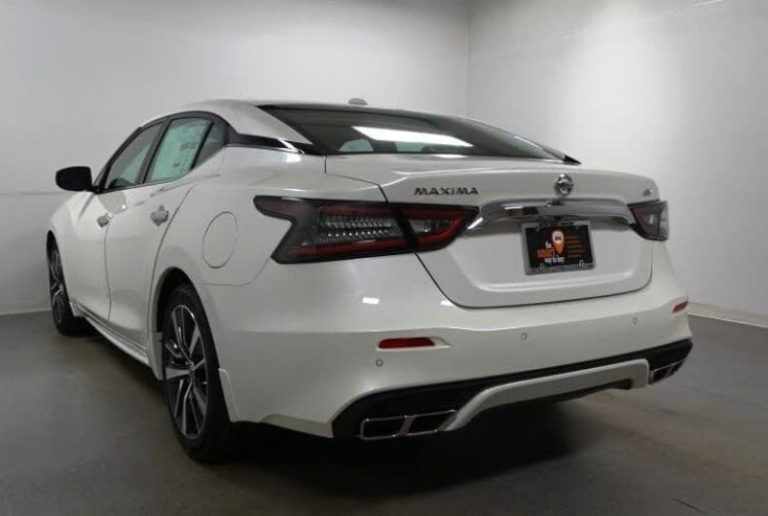Introduction to Nissan Maxima TPMS
Ready to master the art of maintaining perfect tire pressure in your Nissan Maxima? This guide is your one-stop-shop for understanding and resetting the tire pressure light, navigating the “Easy-Fill Tire Alert” system, and learning how factors like weather and speed can impact your tire pressure. We’ll even delve into the nitty-gritty of the Maxima’s sophisticated Tire Pressure Monitoring System (TPMS). So buckle up and let’s dive into the world of tire pressure maintenance for your Nissan Maxima!
How Do You Reset the Tire Pressure Light on a Nissan Maxima?
The Nissan Maxima does not have a tire pressure reset button. It has an “Easy-Fill Tire Alert” system which provides you with audible and visual signals while adjusting your tire pressures.
Park your Maxima in a safe and level place.
Apply the parking brake and put the SUV in Park.
Put the ignition to the ON position. This means engine off, electricity on.
Check and adjust your tire pressures. As you start adding air, the hazard indicators (front and rear blinkers) will start flashing.
Once the correct amount of air has been reached, the horn of your Maxima will beep once and the hazard indicators will stop flashing. Be exact, fill your front and rear tires to exactly 33 Psi.
Repeat the same steps for every tire. (if the tire is overinflated by more than 4 Psi, the horn will beep and the hazard indicators will flash 3 times, release some air.)
After adjusting the tire pressure, drive the vehicle at speeds above 16 MPH (25 km/h). The low tire pressure warning light does not automatically turn off when the tire pressure is adjusted. Once the Maxima reaches 16 MPH (25 km/h) or more, the light will turn off.
If the low tire pressure warning light flashes for approximately 1 minute and then remains on after you turn the ignition switch to the ON position, the TPMS is not functioning properly. (read more about TPMS malfunction below)
If the light doesn’t go off right away, re-check your tire pressure to make sure they are all at the exact pressure you set them to. If the pressure has decreased, you probably have some sort of leak in that tire.
If your tires are not losing air and the tire light still won’t go out, overfilling your tires by about 10 Psi might wake up your sensors. So, overfill them to about 43 Psi and then drive the Maxima for a few minutes. The tire light should reset. Remember: DO NOT leave the tires at this level, release the extra 10 Psi afterwards.
NOTE: Your TPMS will not reset and turn off the low tire pressure warning light until the tire pressure is set to the recommended pressure and the vehicle is driven at speeds above 16 MPH (25 km/h). If you’ve completed these steps and the tire light STILL won’t go out, There is only one of three things that can be the problem. Either have a faulty tire pressure sensor in one of your wheels OR you have a leak OR your receiver module (control unit) is not communicating with your sensors (this is the least of all likely and is rare).
2023 Nissan Maxima Tire Pressure and Size
TIRE SIZE | FRONT PSI | REAR PSI |
245/45R18 | 33 | 33 |
245/40R19 | 33 | 33 |
SPARE TIRE | 60 | 60 |
Nissan Maxima Tire Settings
How to Change Tire Pressure Units
Press the [OK] button on the steering wheel to access the main menu.
Scroll to “Settings” using the up or down arrow buttons on the steering wheel and press [OK].
In the “Settings” menu, scroll to “Tire Pressures” and press [OK].
In the “Tire Pressures” menu, you can select the desired unit (PSI, kPa, or bar) for tire pressure. Use the up or down arrow buttons to highlight your choice and press [OK] to select.
The display will return to the previous menu. You can then exit the menu system by pressing the [BACK] button or simply wait for the system to automatically exit after a period of inactivity.
How to Turn Off the Tire Maintenance Light
The tire indicator appears when the Maxima has driven a preset distance to let you know when it’s time for tire rotations.
Apply the parking brake.
Turn the ignition switch to the ON position. Do not start the engine.
Use the steering wheel switches to toggle through the vehicle information display to find the “Settings” menu.
Once in the “Settings” menu, use the switches to find the “Tire” option.
Select the “Tire” option, then select “Tire Maintenance“.
In the “Tire Maintenance” menu, select “Reset“.
Press and hold the OK button until the confirmation message appears.
The tire maintenance reminder light should now be reset.
How Does the Nissan Maxima TPMS Work?
The Tire Pressure Monitoring System (TPMS) in the Nissan Maxima is a sophisticated system designed to monitor the air pressure inside its tires. The system is designed to alert the driver when tire pressure is too low. Here’s a detailed explanation of how it works:
Sensors: The TPMS includes a sensor in each tire that measures the air pressure. These sensors are located on the tire pressure valve. The sensors are battery-powered and are designed to last for about 5-10 years. The sensors not only measure the tire pressure but also the temperature inside the tire.
Data Collection: The sensors monitor the tire pressure and temperature. If the pressure in one or more tires drops below a certain level, the sensor detects this change. The threshold for low tire pressure is set by Nissan for the Maxima based on its recommended tire pressure.
Data Transmission: The sensors transmit the tire pressure data wirelessly to the Electronic Control Unit (ECU) in the vehicle. This is done using radio frequency (RF) signals. Sensors either transmit on 315 Mhz or 433 Mhz. Each sensor has a unique ID number so the ECU can distinguish between the sensors.
Electronic Control Unit (ECU): The ECU, also known as the vehicle’s computer, receives the data from the sensors. It processes this data and if it detects that the pressure in one or more tires is too low, it sends a signal to the instrument panel in the vehicle’s dashboard.
Dashboard Warning Light: When the ECU detects low tire pressure, it triggers a warning light on the dashboard. This is the yellow exclamation mark inside a tire symbol. This is the TPMS warning light. The Nissan Maxima TPMS also displays the actual tire pressure and indicates which tire is low on pressure.
The TPMS is a safety tool that helps avoid accidents by warning you if your tire pressure is low. But, it doesn’t replace the need to manually check your tires yourself.
What is the TPMS Malfunction Indicator?
As we just mentioned, the Nissan Maxima has a malfunction indicator to alert you when something is wrong with the system itself. The indicator uses the same yellow exclamation point as the low tire pressure light. The difference is that, if there is a problem with the system, the light will flash for about 1 minute before staying on. This flashing will happen every time you start your Maxima until the issue is fixed. When your tire light is flashing your Maxima will not be able to give you accurate pressure readings on the information display. Basically, a blinking tire pressure light means there is a malfunction within the TPMS itself, not an air pressure issue. This is usually due to a faulty pressure sensor in one of your tires (a dead battery) or driving with the spare tire. (if the spare doesn’t have a sensor in it) To figure out which sensor is malfunctioning or faulty, use a TPMS diagnostic tool and scan each sensor for diagnostic information or bring your car to a professional.
What Will Cause the TPMS to Malfunction?
Using non Nissan wheels or tires or replacing wheels or tires without sensors.
Devices that use the same radio waves can interfere with the TPMS. This could be from things like radios, two-way radios, or security systems in shops you drive by. (This is all possible but highly unlikely)
If your Maxima has very dark window tints, it could disrupt the radio signals traveling between the TPMS sensors and the receiver.
Driving with your spare tire. (if your spare doesn’t have a pressure sensor. You can usually tell by the valve. If the tire valve is rubber, there is usually no sensor. If the valve is metal, there is a sensor)
If there’s a lot of snow or ice built up around the tire valves.
If the tire pressure is extremely high.
Driving at high speeds for an extended period of time.
If new tire pressure sensors are installed without registering the new sensor identification codes with the Maxima ’s receiver module/ECU. (You need a TPMS diagnostic tool to do this)
What are Common Reasons the Tire Pressure Light Turns On?
Weather Changes: A drop in ambient temperature can cause tire pressure to decrease, triggering the warning light. This is very common in fall and winter seasons.
Tire puncture or leak: An object with a sharp edge or roadway debris such as a nail or screw could pierce a tire, leading to a loss of air that will subsequently trigger the warning light.
Faulty tire pressure sensor: Damaged or malfunctioning sensors may provide inaccurate readings, resulting in a false alert. The only way to determine which sensor is faulty is to scan each sensor with a TPMS diagnostic tool.
Valve stem issues: A faulty or leaking valve stem can result in a slow loss of pressure, ultimately causing the tire pressure light to illuminate. There are available kits designed to replace the rubber gasket that usually goes bad.
Tire damage: Impact from potholes or hitting a curb can cause structural damage like tire bubbles, leading to pressure loss.
Sensor battery life: TPMS sensors are battery-powered, and over time, batteries die. (they usually last anywhere from 5-10 years) This will cause the tire pressure light to turn on. Again, you must use a diagnostic tool to determine which sensor is dead or dying.
Recent tire rotation or replacement: If you have recently rotated or replaced your tires, the TPMS may need recalibration to avoid false alerts. Sometimes the vehicle’s computer may think the front tires are in the rear and rear in the front after a rotation.
Wheel issues: Cracked, corroded or damaged wheels can lead to air leaks and pressure loss. This is very common with low profile tires.
Altitude changes: Climbing or descending in elevation can affect tire pressure and trigger the TPMS warning. An additional 1.5 Psi per Kilometer above sea level is recommended.
Natural pressure loss: Over time, tires experience a decrease in air pressure due to fluctuations in temperature and permeation. Tires that sit for extended periods will develop dry rot, eventually leading to pressure loss.
Software Updates: Occasionally Nissan may put out a software update for the Maxima ’s tire pressure system.
Snow Tires: If you have a separate pair of wheels for your snow tires, you can either transfer the sensors from your summer wheels or acquire an additional set of 4 sensors for the second pair of wheels. However, if you are using the same wheels for both sets of tires, don’t worry about this.
What are the Effects of Underinflated or Overinflated Tires?
Having too little or too much air in your tires can really affect how safe and well your Nissan Maxima performs. Here are some important things to keep in mind:
Effects of Underinflated Tires:
Decreased Fuel Efficiency: Underinflated tires create more resistance, which reduces fuel efficiency.
Increased Tire Wear: Underinflated tires wear more on the edges of the tread.
Poor Handling: Underinflated tires can make the car harder to handle. It may feel sluggish or unresponsive, especially when making turns.
Overheating: Underinflated tires can overheat, which can lead to complete tire failure.
Effects of Overinflated Tires:
Reduced Traction: Overinflated tires have less contact with the road, which can reduce traction and make the car more difficult to handle, especially in wet conditions.
Harsher Ride: Overinflation makes the tires harder, resulting in a less comfortable ride. You will feel all the bumps and vibrations of the road.
Increased Wear in the Center of the Tire: Overinflated tires tend to wear more in the center of the tread because they bulge out in the middle.
Greater Risk of Tire Damage: Overinflated tires are more susceptible to damage from potholes and other road hazards. They can also burst if the pressure gets too high.
In both cases, it’s important to maintain the correct tire pressure as recommended by Nissan for the Maxima. This will ensure optimal performance and longevity of your tires.
How Does the Weather Affect Tire Pressure?

Weather plays a sneaky role in your Nissan Maxima’s tire pressure! When temperatures drop, so does your tire pressure – it’s a cold hard fact. For every 10-degree drop in temperature, your tires can lose about 1 PSI. On the flip side, hot summer days can cause your tire pressure to increase. So, whether it’s a chilly winter morning or a scorching summer afternoon, keep an eye on your Maxima’s tire pressure. It’s not just about the drive, it’s about safety and efficiency too!
How to Adjust Tire Pressure
Make sure the tires are cold.
Remove the valve cap from the tire.
Press the tip of the tire pressure gauge onto the valve and read the pressure.
If the tire pressure is below the recommended level (33 Psi), fill the tire with air until 33 Psi is reached. If the tire pressure is above 33 Psi, release air until it’s at exactly 33 Psi. (Press the metal stem in the center of the tire valve. You can use any object like a screwdriver to do this. Be gentle.)
After adjusting the tire pressure, don’t forget to put the valve caps back on to prevent leaks and keep dirt and moisture out.
Repeat this process for each tire, including the spare if applicable.
When Should You Adjust Your Tire Pressure?
For a precise tire pressure reading on your Nissan Maxima, measure the air pressure when the car has been idle for some time. This is called checking the “cold pressure“, ideally when the car hasn’t been driven for three hours or more. When you drive your tires heat up, making the air inside expand and give a misleadingly high pressure reading. So, avoid adjusting your tire pressure immediately after driving, or you’ll end up with overinflated tires!
Conclusion
And there you have it – your comprehensive guide to understanding and managing the tire pressure in your Nissan Maxima. From resetting the tire pressure light to adjusting tire pressure units, and understanding how weather and driving conditions can impact your tire pressure, you’re now equipped with the knowledge to ensure a smooth and safe ride. Remember, maintaining the right tire pressure is not just about performance, it’s about safety too. So, keep this guide handy and happy driving! Everything in this article is applicable to all Nissan Maxima models and trims. This includes the Maxima SV, Maxima SR, Maxima PLATINUM.
FAQ
Q: Where is the TPMS reset button on Nissan Maxima?
A: The Nissan Maxima doesn’t have a physical TPMS reset button. Instead, you reset the TPMS through adjusting the tire pressure and driving the vehicle above 16 Mph for a few miles.
Q: Why won’t my tire pressure light go off even if the tires are full?
A: If your tire pressure light stays on even after filling the tires, it could be due to a few reasons. The TPMS sensors might be malfunctioning, or the system might need to be reset. It’s also possible that one of your tires is losing pressure quickly after being filled. If the light stays on, it’s best to have your vehicle inspected by a professional.
Q: Why is my low tire pressure light on but my tire pressure is normal?
A: If your low tire pressure light is on but the tire pressure seems normal, it could be a problem with the TPMS itself. The sensors might be malfunctioning, or there could be an issue with the system’s software. It’s also possible that the system was not reset after the tires were last serviced. If the light remains on, you should have the system checked by a professional.
Q: Can I ignore the tire pressure light?
A: No, it’s not advisable to ignore the tire pressure light. This light is a warning that at least one of your tires may be underinflated, which can lead to poor fuel efficiency, uneven tire wear, and potentially a blowout. If the light comes on, you should check your tire pressure as soon as possible and inflate any underinflated tires to the recommended pressure. (33 Psi in the Nissan Maxima) If the light stays on after you’ve checked and adjusted the tire pressure, your vehicle may have a problem with the Tire Pressure Monitoring System (TPMS) and should be inspected by a professional.
Please note that this blog post contains Amazon affiliate links. This means that if you make a purchase through one of these links, we at TPMSRESET.com may earn a small commission at no extra cost to you. We only recommend products that we personally use and believe in. Thank you for supporting us.





